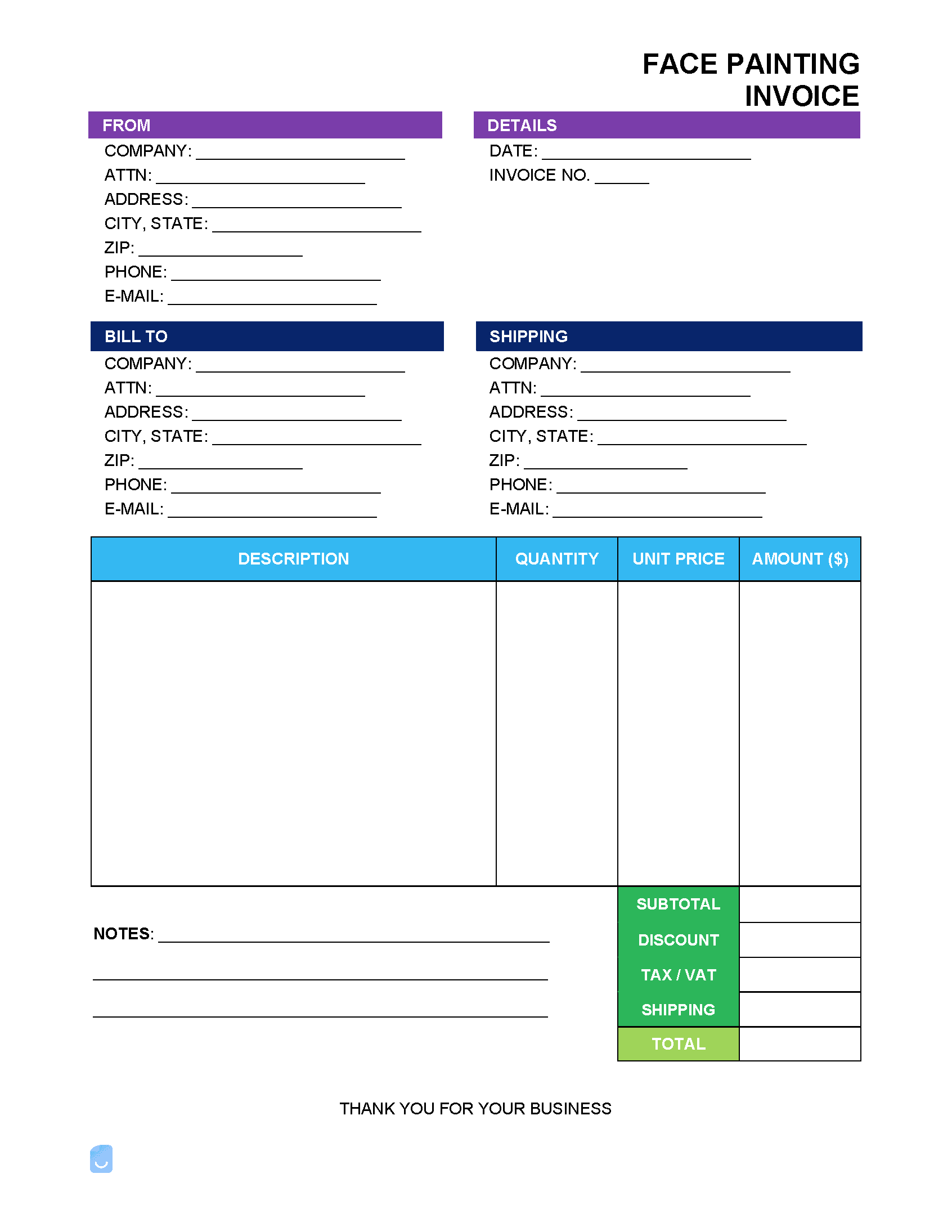A face painting invoice is used by both craft stores that sell face paint (kits), and by makeup artists to bill customers for purchased products and services.
How to Face Paint
Face painting is a popular activity at festivals, Halloween, birthdays, parties, amusement parks, and sporting events. Face paint is a particular type of paint that is designed to be applied to the face. Not all paints should be used on the face as some paints like acrylics can cause severe damage to the skin and can lead to breakouts/rashes.
Step 1 – Where to Buy?
To find the best products at the cheapest price, it’s best to look online. Amazon and eBay are the top retailers online that provide a wide variety of face painting supplies with reviews. The average Face Painting Kit lists for around $11.99 while premium kits go for about $20. Kits are an easy way for beginners to learn how to face paint without paying for all the costly materials. Along with paint, kits normally come with reuseable stencils and brushes.
Step 2 – What you Need
For basics, the painter needs brushes, a variety of quality paint colors (12 color set), and cleaning supplies for taking off the face paint. Any product applied to the face should be FDA approved, which it should say on the packaging. The three (3) major products to purchase are:
- Paint – Paints should be suitable for sensitive skin and easily be washable with soap and warm water after use. Acrylic paints should NOT be used on any part of the human body. Paints should also be fragrance-free to limit irritations. Must be non-toxic.
- Brushes – For detailed face painting, it’s recommended to buy a 10-piece paint set (~$5 average price). Smaller brushes will allow the face paint artist to apply stronger details. Brushes must be made of nylon to avoid irritation.
- Cleaning Supplies – Because face paint only needs the bare necessities to clean (warm water and soap), there shouldn’t be much to purchase for cleaning supplies. Neutrogena makeup removing wipes work great for removing face paint. A warm damp towel works as well.
Step 3 – Applying to Face
Before adding paint to a person’s face, make sure to use soap, and thoroughly wash beforehand. If applying solo, always apply in front of a mirror. Use a smaller brush for areas around the eyes and mouth, whereas a larger brush can be used for the cheek and forehead. Shorter, quicker strokes should be used instead of longer ones.
